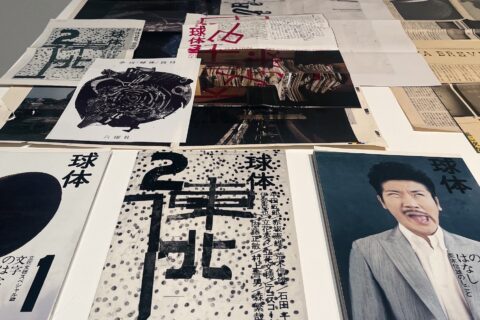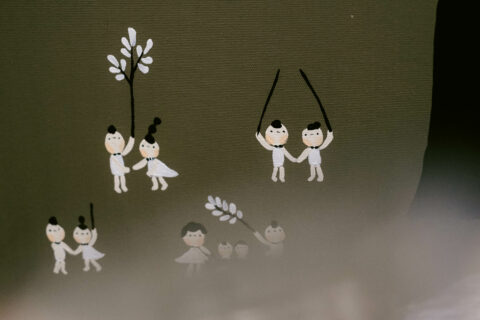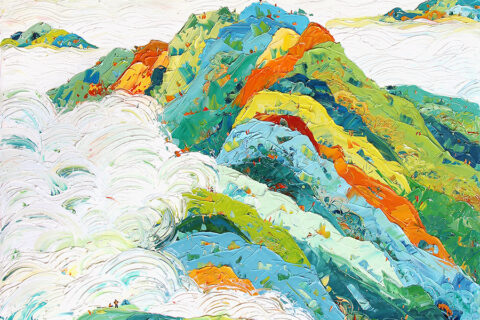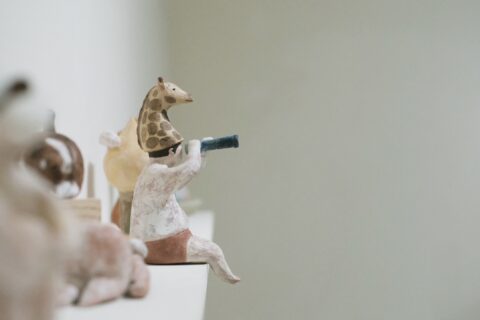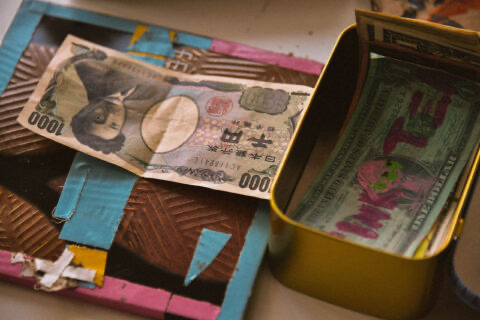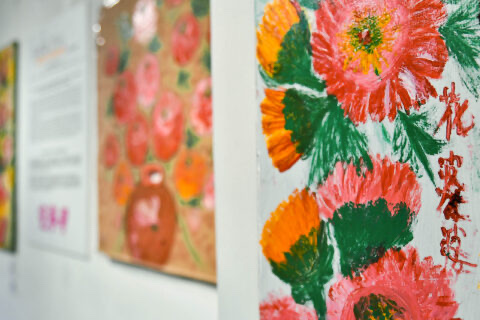Carsten Höller說凡事都有兩面,就像他的背景。
擁有昆蟲學博士學位,沒有跑去當昆蟲科學家,卻選擇了藝術。看待藝術如科學。科學為世界中各種迷團提供答案,Höller認為藝術也有著相同的功用,為世界提供答案。但人類始終是感性動物,好些問題不能單靠科學解答,於是這世上還需要有藝術的存在。
正在香港舉行他首次個展「Double」,展覽中有一個一分為二、兩半不同的草菇。一半是帶毒性的紅底白點「毒蠅傘」,另一半是常見的菇菌類品種。但關於菇菌類的生長過程,卻令這名科學藝術家摸不著頭腦。菇菌類在泥土下生長,在合適的氣候中它們會長成不同顏色、型狀稍異,有些顏色會鮮艷繽紛卻帶毒性,吸引昆蟲卻讓蟲兒們賠上性命。跟花果不同,花果顏色是要吸引昆蟲傳播花粉,繁植下一代。Höller對這個非常不解。假如像他說這種二分的理論,在日常生活中隨處可見,這個其實不太難理解,我想大抵是人生總是平常及痛苦摻雜,而我們總會有過「明知有害但也一頭裁進去」的情況。
展覽中還有另一作品〈Vehicle〉黃橙兩個圓型能夠滾動,Höller建議最佳的方法是用它來滾下山坡。可惜在香港的展覽設在畫廊中,作品被吊起滾動不了。我想起去年在米蘭的Pirelli HangarBicocca中他的個展「Doubt」,也有〈Vehicle〉的展出,而其他作品全都可以玩,就是觀眾如身處遊樂場中,體驗作品的趣妙之處。「Double」挑戰參觀人士的感官反應,穿過似是平衡卻又不是的雙軌道,還有以鏡子造成的錯覺迷宮⋯⋯Höller藉作品跟參觀者互動,他認為觀眾跟自己對作品有著不同的了解,也是一種二分既互相排斥卻又互補的關係。
「人們都說科學跟藝術相似,我認為他們是水溝油。例如我創作了不少巨型滑梯,觀眾可以藉它從高處滑下。但他們也會因為畏高而不能對作品產生共鳴,又或者選擇只遠觀不參予。」Höller堅持藝術與科學既結合卻又二分。或許水乳交融的狀態也有著排斥的內涵,世事總如此。
Carsten Höller says there are two sides to everything, just like his background.
Even though he holds a doctorate in agricultural science specializing in the area of insects, rather than becoming an entomologist, he has devoted himself to arts. He treats arts as he does science. Science solves various mysteries in the world, and Höller believes that arts serves the same purpose by offering answers for the world. However, after all, human beings are emotional animals, and quite a lot of questions cannot be answered based only on science. That is why arts still has its place in the world.
Höller is currently holding his first solo exhibition in Hong Kong titled Double, in which there is a mushroom broken up into two uneven halves. One half is “fly agaric”, a kind of poisonous mushroom that is white-spotted and red while the other half is a commonly found mushroom species. However, the growth of mushroom baffles this science-trained artist. They grow under the soil into various colors and slightly different shapes under suitable climate. Some are colorful yet carry poison, thereby luring insects to their death. They are unlike flowers and fruit, whose colors serve to attract insects to pollinate for them to ensure reproduction. Höller finds this very difficult to understand. If the two-sided concept, as he suggests, can be commonly found in daily life, this actually is not too difficult to understand. I would think that life most probably is always a mixture of the mundane and pain, and we must have had the experience of “embracing something despite knowing that it is bad for you”.
Another piece featured in the exhibition is titled Vehicle, with two orange and yellow-colored spheres, designed to be spun downhill ideally in the mind of Höller. Regrettably in the Hong Kong exhibition, since the piece has been installed within a gallery, it is being hung in the air and thus cannot spin. I recall his solo exhibition titled Doubt held inside Pirelli HangarBicocca in Milan, in which Vehicle was also among the exhibits, which were all playable. Visitors felt as though they were inside an amusement park in which they could experience for themselves what was fun and interesting about the pieces. Double challenges the viewers’ sensation. They can pass through two rails which seem to be parallel but are actually not, as well as through a maze formed by mirrors that give you illusions…Höller attempts to interact with viewers through his work. According to him, the fact that the viewers develop an understanding about the pieces differing from his also reflects a two-sided relationship that is complementary yet mutually repulsive at the same time.
“People say that science and arts are similar but I think they are like water being mixed with oil. For example, I have created quite a lot of large-scale slides so that visitors can slide down from the top. However, such pieces might not resonate with them because they have a fear of heights, or they might choose only to see them from a distance without participating.” Höller insists on both combining arts and science and separating the two at the same time. Perhaps even something blended as well as water and milk contains elements that repel each other. It is always how things are in this world.
